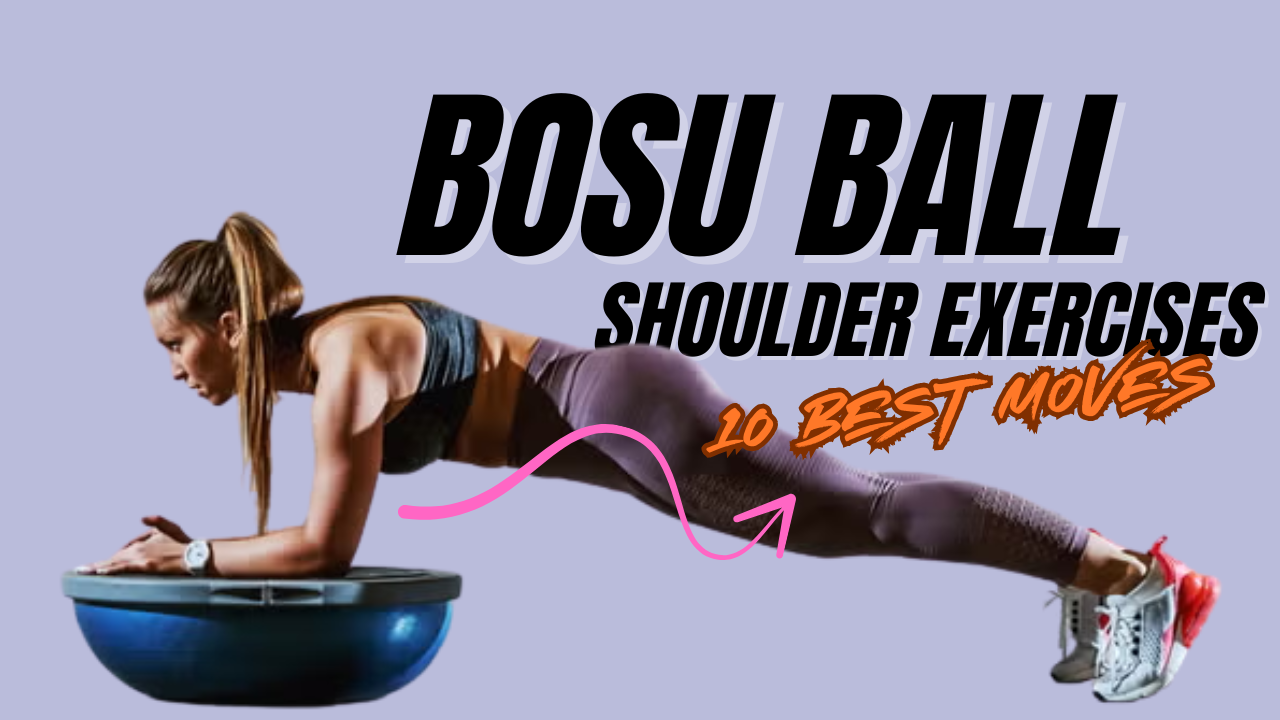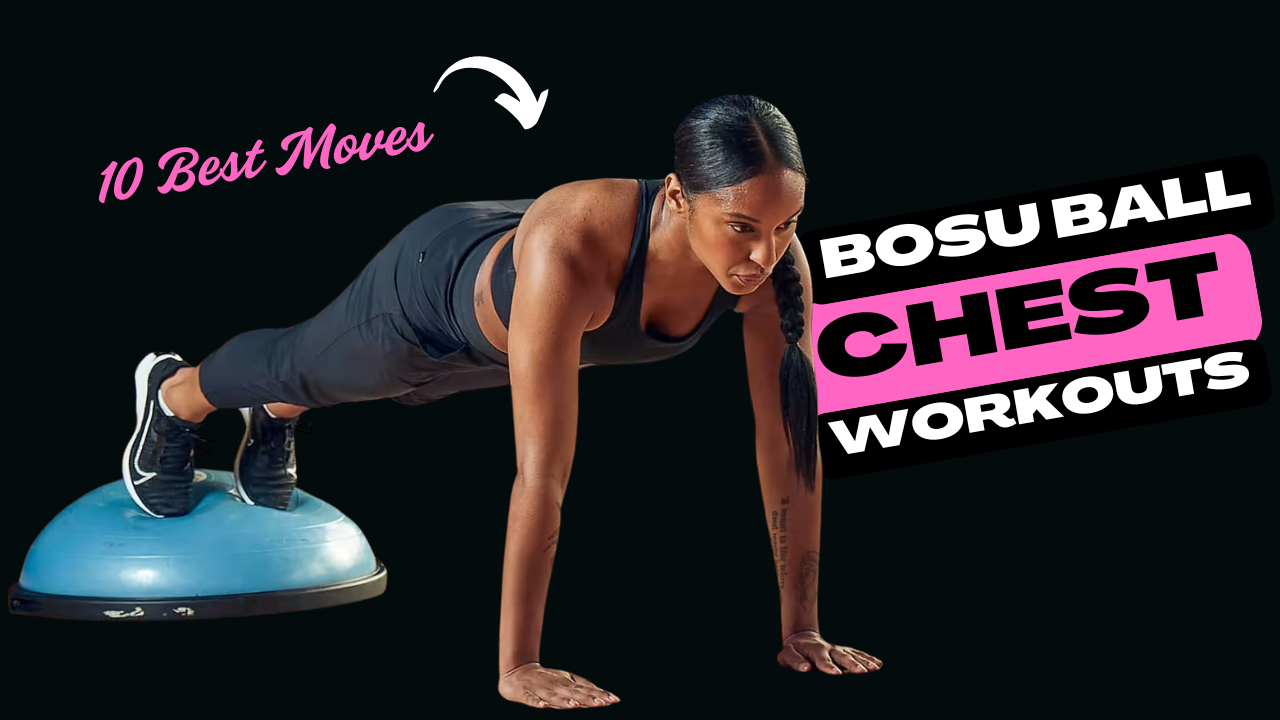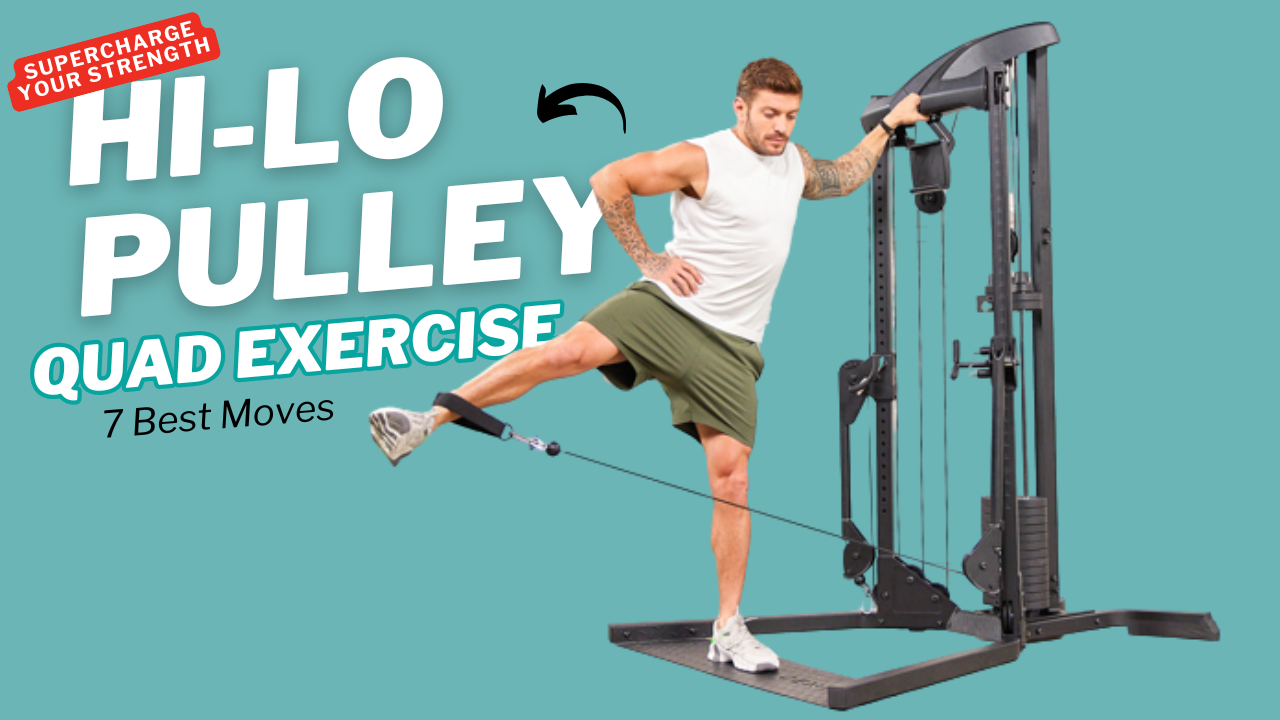Want that classic V-shaped back that turns heads and screams power? The secret lies in mastering exercises that sculpt your lats and upper back—key muscles responsible for that wide, tapered look.
While cable crossovers are often thought of as chest-focused, they’re a hidden gem for targeting multiple back angles with unmatched control and tension.
Do you know? Cable machines allow for constant tension through the entire range of motion—something dumbbells and barbells can’t always offer. This makes them incredibly effective for hypertrophy (muscle growth) and muscle activation.
In this guide, we’ll uncover 11 powerful cable crossover back exercises you can do to carve out a broader, thicker, and more defined V-taper.
Whether you’re a beginner or looking to upgrade your pull game, these moves will fire up your back like never before.
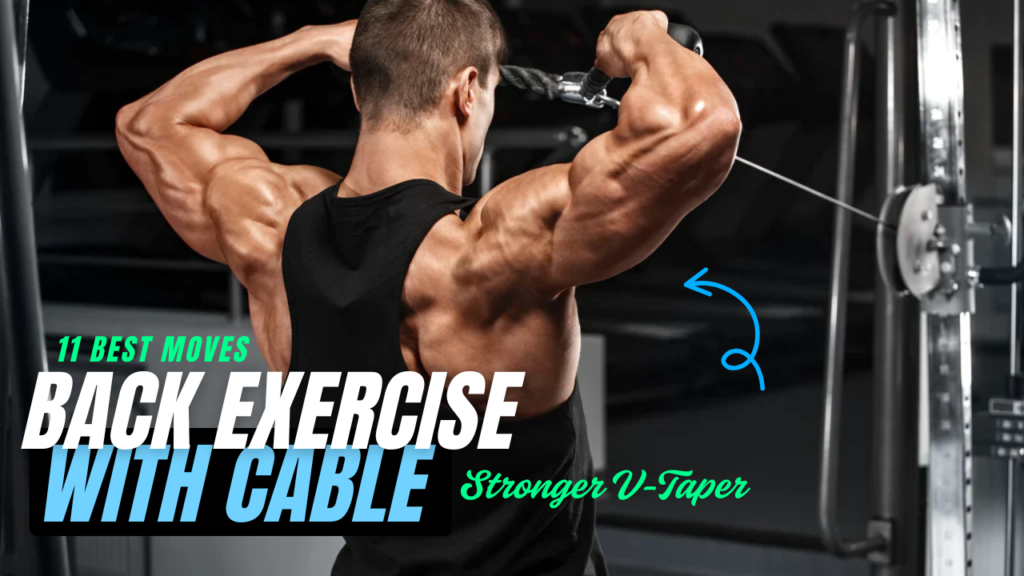
Table of Contents
What Can Happen After 30 Days of Cable Crossover Back Training
| Result | Explanation |
|---|---|
| Improved Mind-Muscle Connection | You’ll feel your back muscles activating better, especially your lats and traps. |
| Noticeable Increase in Back Definition | Constant tension helps sculpt clearer muscle lines and definition. |
| Stronger Posture | Strengthening rear delts and traps improves posture and reduces slouching. |
| More Controlled Movements | Cable work enhances stability, form, and range of motion control. |
| Better Symmetry Between Left & Right Sides | Single-arm work corrects imbalances for a more even-looking back. |
| Slight Size & Width Gains | Visible improvements in V-taper shape begin to show with proper training/diet. |
| Increased Strength in Pulling Movements | You’ll likely feel stronger in rows, pulldowns, and even pull-ups. |
| Reduced Joint Discomfort (if any) | Smoother movements are gentler on joints, improving comfort during workouts. |
| Higher Motivation to Train Back | Quick results and muscle engagement boost your confidence and consistency. |
| Boost in Overall Upper Body Appearance | A stronger, wider back makes your waist look smaller and enhances aesthetics. |
Also Read: 11 Kettlebell Chest Workouts That Ignite Strength & Size
Do & Don’t While Performing Cable Crossover Back Exercises
| DO | DON’T |
|---|---|
| Focus on slow, controlled movements | Don’t jerk or use momentum to move the weight |
| Adjust cable height to target different parts of your back | Don’t use the same angle for every exercise |
| Maintain a neutral spine and proper posture throughout | Don’t round your back or arch excessively |
| Keep your elbows slightly bent and drive with them, not your hands | Don’t let your arms take over the movement (especially biceps) |
| Use a full range of motion for complete contraction and stretch | Don’t stop short or use partial reps unless intentionally planned |
| Warm up properly before heavy or intense sets | Don’t jump into heavy weights without warming up |
| Squeeze your back muscles at the peak of each rep | Don’t rush through reps without feeling the muscle |
| Mix up cable exercises with free weights or pull-ups for variety | Don’t rely solely on one training method |
| Train back 1–2 times a week consistently for best results | Don’t overtrain the same muscle group with poor recovery |
| Adjust weights gradually to avoid injury and maximize progress | Don’t ego lift—form matters more than heavy stacks |
Benefits of Cable Crossover Back Exercises
- Maximized Muscle Engagement: Constant resistance ensures peak contraction and controlled negative reps.
- Adjustable Angles: You can hit the upper, mid, and lower back from multiple directions.
- Joint-Friendly: Smoother movement makes it ideal for people with shoulder or joint issues.
- Perfect for Isolation: Especially effective for isolating the lats and mid traps without involving the biceps too much.
- Great for Symmetry: Encourages even muscle development, correcting imbalances.
11 Cable Crossover Back Exercises for V-Taper Gains
1. Standing Low Cable Lat Pulldown (Crossover Style)
Target: Lats
How to:
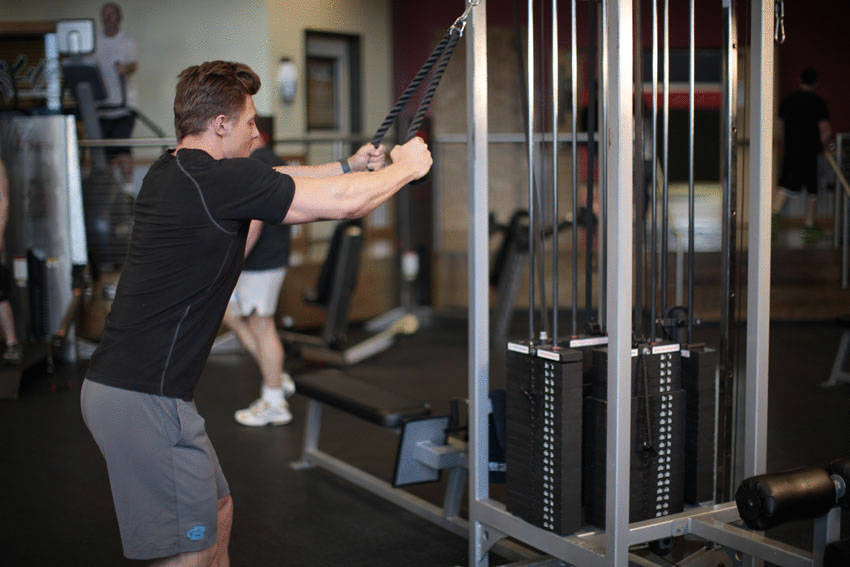
- Attach single handles at the lowest pulleys.
- Step back and bend slightly at the hips.
- Pull both handles down in an arcing motion toward your hips, squeezing your lats.
- Slowly return to start.
Pro Tip: Focus on elbow drive, not hand movement, for better lat activation.
Also Read: 10 Barbell Hamstring Exercises That Build Muscle & Mobility
2. High Cable Straight-Arm Pulldown (Dual Cable)
Target: Lats, teres major
How to:

- Stand in the middle of a dual cable station with handles set high.
- Pull the handles down and back with straight arms.
- Pause at the bottom for a strong squeeze.
Why it works: Keeps tension on the lats throughout and avoids biceps taking over.
3. Kneeling Dual Cable Lat Pull-In
Target: Lats (outer portion)
How to:
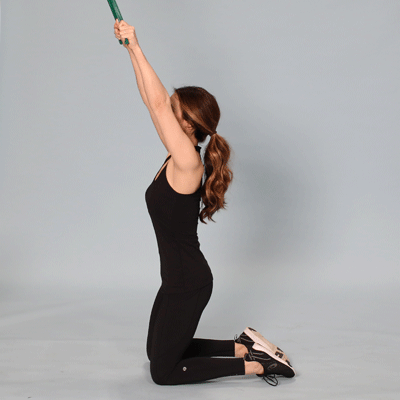
- Kneel between cables set at mid-height.
- Pull handles inward and downward in a sweeping motion toward your waist.
- Hold and slowly return.
Underrated gem: This variation offers a lat stretch that’s hard to replicate elsewhere.
4. Single-Arm Cable Row (With Rotation)
Target: Mid-back, rhomboids
How to:
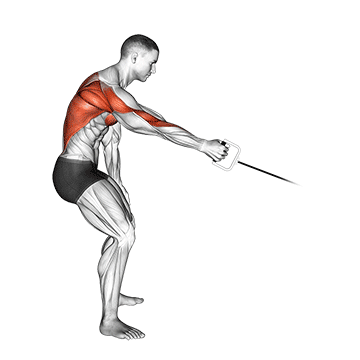
- Use one handle at chest height.
- Pull towards your waist while slightly rotating your torso.
- Squeeze the scapula at the end of the movement.
Myth buster: You don’t need heavy weights to build thickness—controlled, full-range rows do wonders.
Also Read: 10 Barbell Oblique Exercises That Carve Your Waist Like a Pro
5. Wide-Grip Cable Row (Crossover Style)
Target: Upper lats and rear delts
How to:
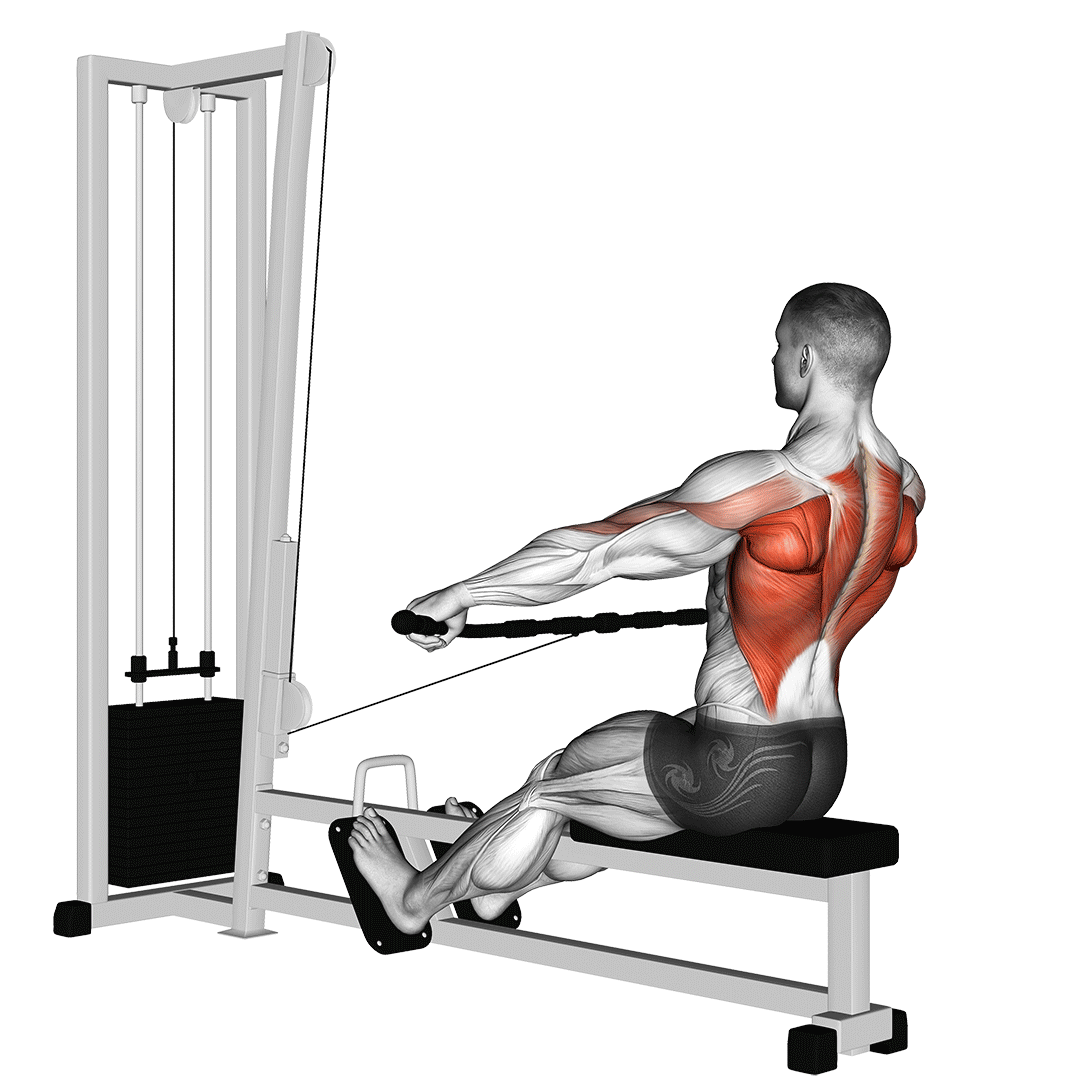
- Attach D-handles to opposite high pulleys.
- Sit or kneel in between and row with a wide arc.
- Squeeze your upper back at peak contraction.
Muscle sculptor: Emphasizes width by hitting the outer lats.
6. Cable Face Pulls (Cross Cable Variant)
Target: Rear delts, traps, rhomboids
How to:
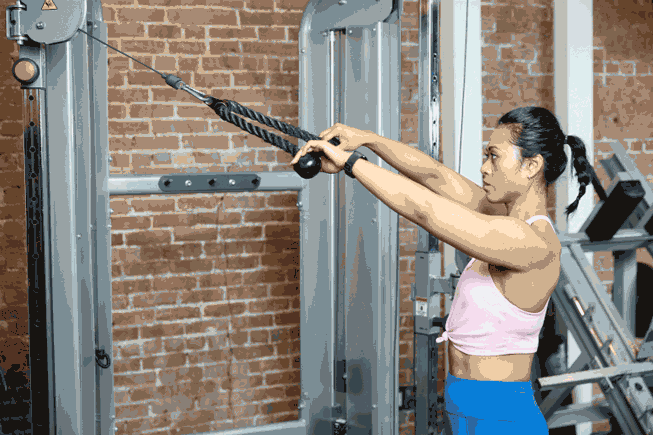
- Use rope attachments on mid-to-high pulleys.
- Pull toward your forehead with elbows high and out.
- Hold and slowly return.
Great posture corrector: Builds the often-neglected rear delts and improves shoulder health.
7. Cross-Body Cable Lat Pull-In
Target: Lower lats
How to:
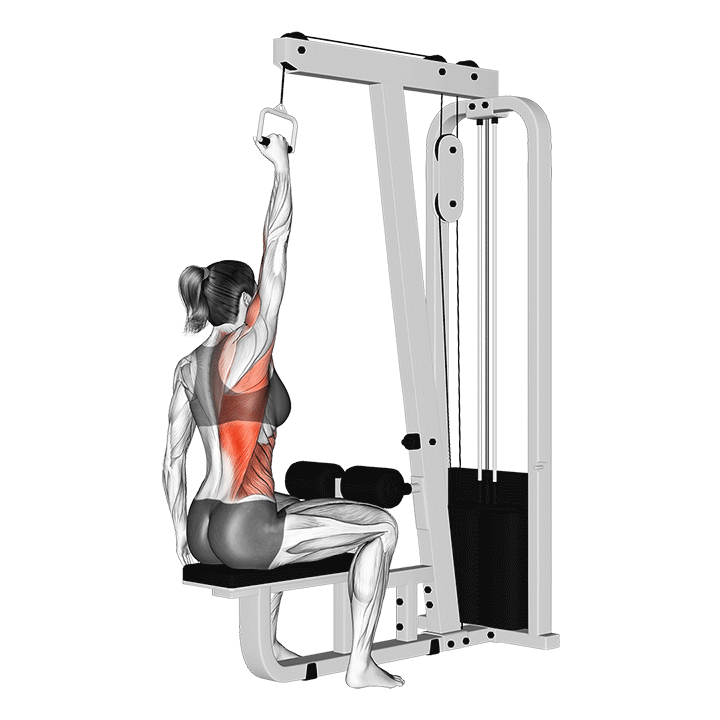
- Attach a single handle to a low pulley.
- Stand diagonally across from the cable and pull across your body to your hip.
- Keep the motion slow and controlled.
V-taper hack: Emphasizes the bottom of the lats for that sweeping shape.
Also Read: 13 Barbell Bicep Workouts to Add Size, Power & Peak
8. Cable Rear Delt Row (Reverse Grip)
Target: Rear delts and upper back
How to:
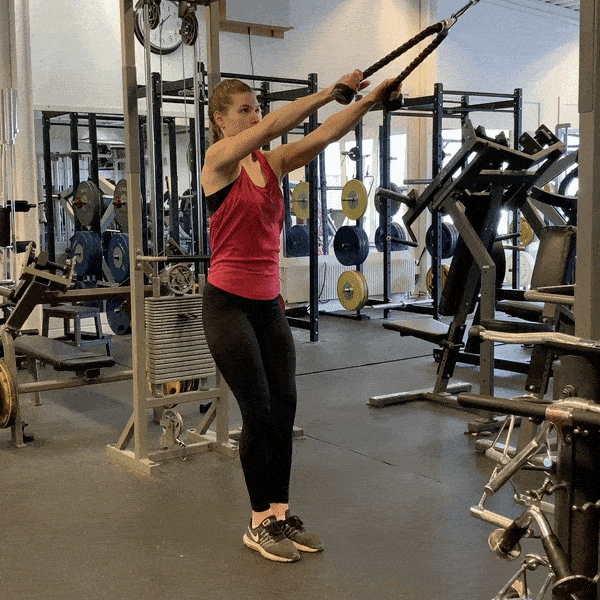
- Use a straight bar or two handles.
- Pull back with elbows flared and wrists rotated outward.
- Keep movement tight and controlled.
Did you know? Rear delt rows can outperform reverse flyes in EMG studies for muscle activation.
9. Lat-Focused Cable Shrugs
Target: Upper traps, lower traps
How to:
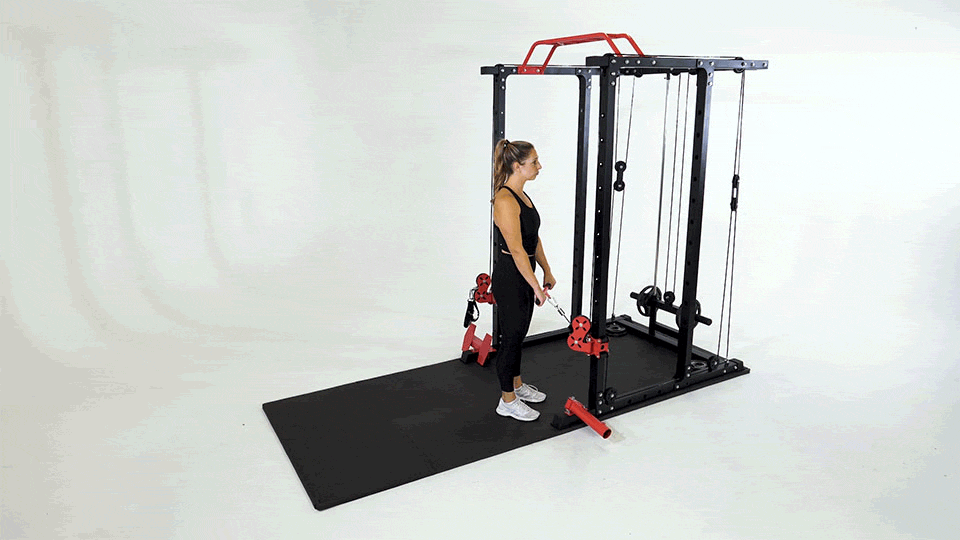
- Use low cable handles or a bar attachment.
- Stand upright and shrug with arms extended forward at a slight angle.
- Pause and squeeze.
Shrug smarter: Cables give you control over direction—angle your shrugs slightly backward to hit mid traps too.
10. Seated Cable Row (Cross-Grip)
Target: Mid-back
How to:
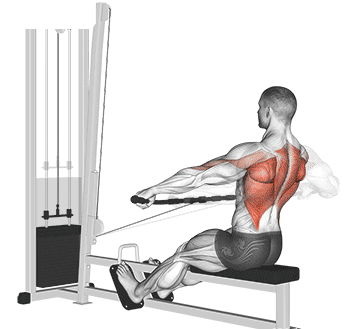
- Use opposite cables in a seated position.
- Row in a diagonal crosspath toward your ribs.
- Keep your torso upright and squeeze your back.
Cross for symmetry: This variation helps develop balanced back definition across both sides.
Also Read: Sculpt a Bigger Chest: 12 Barbell Exercises for Explosive Growth
11. Cable Pullover (With Bench or Standing)
Target: Lats, serratus anterior
How to:
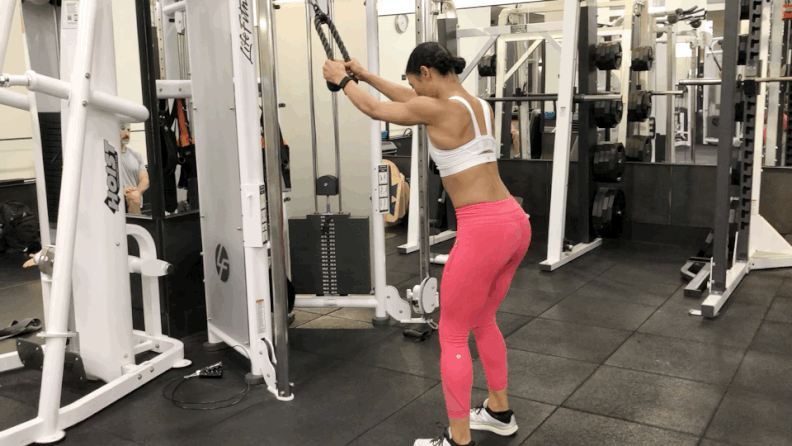
- Lie on a bench or stand slightly bent forward.
- Pull rope or straight bar over and down with straight arms.
- Engage your core and keep tension steady.
Old-school meets new tech: A classic bodybuilding move made better with constant cable resistance.
Programming Tips:
- Reps: 10–15 for hypertrophy, 6–8 for strength
- Sets: 3–4 per exercise or mix 5–6 of them in a workout
- Rest: 30–60 seconds for hypertrophy, 60–90 seconds for strength
- Frequency: 2x/week for optimal back development
Final Thoughts:
Your V-taper isn’t just born in the mirror—it’s built with the right tools. Cable crossovers are not just for chest day; when used creatively, they become one of the best assets for carving out a powerful, symmetrical, and jaw-dropping back.
So the next time you hit the gym, skip the barbell rows for a session, and plug into the cable station—your lats will thank you.
Also Read: 13 Best Dumbbell Hamstring Exercises for Stronger, Leaner Legs
Frequently Asked Questions (FAQs)
Can cable crossover exercises alone build a complete back?
Cable crossover exercises can be incredibly effective for targeting all areas of the back due to their constant tension and angle variety. However, for optimal development, it’s best to combine them with free weight and bodyweight movements like pull-ups or barbell rows.
How often should I do these cable back exercises?
For most people, training back twice per week using a mix of these exercises can yield noticeable improvements in size, strength, and symmetry.
Are cable exercises better than dumbbells or barbells for the back?
Not better—just different. Cables offer constant resistance, better muscle isolation, and are generally more joint-friendly. They’re excellent for fine-tuning your back and preventing injuries.
Can beginners use cable crossover machines for back training?
Absolutely! Cable machines are beginner-friendly and safe. Just start with light weight and focus on form and control to avoid using momentum.
What’s the best cable back exercise for building width?
Movements like Standing Low Cable Lat Pulldowns and Wide-Grip Cable Rows are excellent for targeting the outer lats, which contribute to that wide V-taper look.
Is it okay to use only single-arm cable exercises?
Yes. In fact, single-arm variations are great for correcting imbalances and improving mind-muscle connection. Just ensure both sides get equal volume and intensity.
Do I need a specific type of cable machine for these exercises?
Most functional cable crossover machines found in commercial gyms work fine. As long as the cables are adjustable (high, mid, low), you can perform all these exercises.
How long does it take to see results from cable back exercises?
With consistent training, proper nutrition, and recovery, you may begin to notice changes in strength and back definition in 4 to 6 weeks.
Are these exercises suitable for people with shoulder pain?
Cables allow for smoother, more controlled movement, which can be easier on the joints. However, if you have existing shoulder issues, consult a professional and avoid any move that causes pain.
